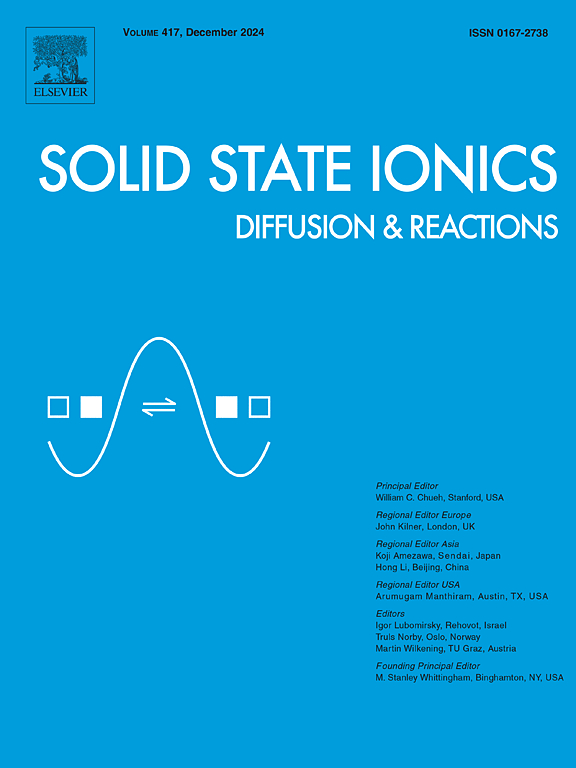中温硫La0.7Sr0.3V氧化阳极催化剂在氢气气氛中的耐硫变化
IF 3.3
4区 材料科学
Q3 CHEMISTRY, PHYSICAL
引用次数: 0
摘要
随着SOFC技术向低温操作迁移,以解决物理降解问题,人们正在探索更耐硫的催化剂材料,以解决与硫中毒有关的化学降解问题。在本研究中,通过x射线衍射,扫描电镜和能量色散光谱进一步实验研究了先前报道的高温耐硫SOFC催化剂La0.7Sr0.3VO3.86-⸹(LSV),在当前目标SOFC中间工作温度(400-700°C)下,硫化氢浓度在30 ppm - 300 ppm之间,平衡氢气长达100小时。LSVs的硫耐受性随工作温度和H2S浓度的变化而变化,在500 ~ 700℃之间,LSVs的硫吸附率最低,这主要归因于LSVs的立方结构和钒的V3+氧化态。在400 ~ 500℃的温度下,由于其单斜/四方晶体结构和钒的V5+氧化态,LSV的耐受性下降。本文章由计算机程序翻译,如有差异,请以英文原文为准。
Sulfur-tolerance variation in intermediate-temperature sulfur La0.7Sr0.3V oxide anode catalyst in hydrogen atmosphere
As SOFC technologies migrate to lower temperature operation to resolve physical degradation issues, the development catalysts materials with greater sulfur tolerance are being explored to resolve issues of chemical degradation related to sulfur poisoning. In this study, a previously reported, high temperature, sulfur tolerant SOFC catalyst, La0.7Sr0.3VO3.86-⸹ (LSV), was further experimentally investigated via X-ray Diffraction, Scanning Electron Microscopy and Energy Dispersive Spectroscopy for its sulfur tolerance at currently targeted SOFC intermediate operating temperatures (400–700 °C) in hydrogen sulfide concentrations between 30 ppm–300 ppm, balance hydrogen gas up to 100 hr. LSVs sulfur tolerance varied with operating temperature and H2S concentration with the lowest sulfur adsorption rates occurring between 500 and 700 °C and is attributed to LSVs cubic structure and vanadium's V3+ oxidation state. At temperatures between 400 and 500 °C LSV shows decreased tolerance which is attributed to its monoclinic/tetragonal crystal structure and vanadium's V5+ oxidation state.
求助全文
通过发布文献求助,成功后即可免费获取论文全文。
去求助
来源期刊

Solid State Ionics
物理-物理:凝聚态物理
CiteScore
6.10
自引率
3.10%
发文量
152
审稿时长
58 days
期刊介绍:
This interdisciplinary journal is devoted to the physics, chemistry and materials science of diffusion, mass transport, and reactivity of solids. The major part of each issue is devoted to articles on:
(i) physics and chemistry of defects in solids;
(ii) reactions in and on solids, e.g. intercalation, corrosion, oxidation, sintering;
(iii) ion transport measurements, mechanisms and theory;
(iv) solid state electrochemistry;
(v) ionically-electronically mixed conducting solids.
Related technological applications are also included, provided their characteristics are interpreted in terms of the basic solid state properties.
Review papers and relevant symposium proceedings are welcome.
 求助内容:
求助内容: 应助结果提醒方式:
应助结果提醒方式:


